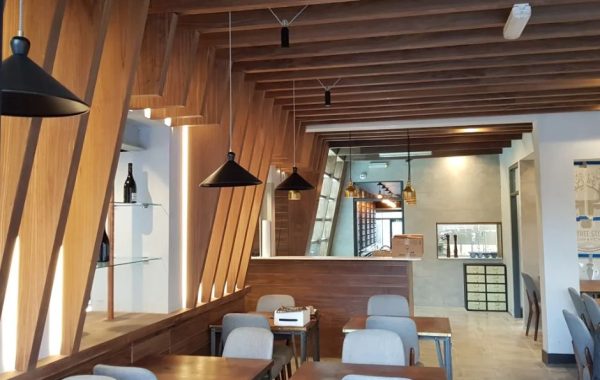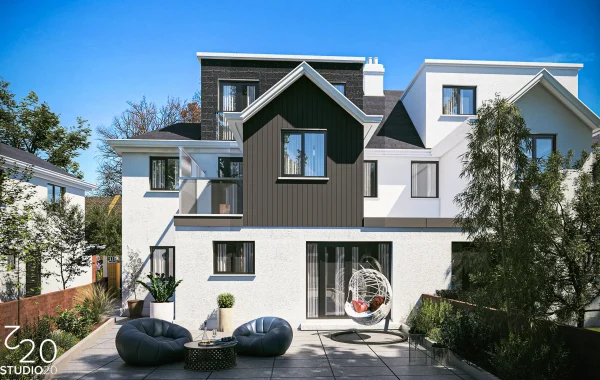Navigating the Planning Permission Landscape in Richmond Heathfield: A Fresh Perspective
Richmond Heathfield, a gem tucked away in the sprawling and serene Royal Borough of Richmond upon Thames, is one of London’s most coveted residential and commercial hubs. Surrounded by lush greenery, scenic parks, and charming streets, the area offers a balance of modern living and traditional British charm. However, as with any prime location, embarking on a construction or renovation project in Richmond Heathfield requires a clear understanding of planning permission – a key element in ensuring your development aligns with the borough’s unique character.
But planning permission isn’t just a bureaucratic hurdle – it’s an essential tool for safeguarding the area’s aesthetic integrity, environmental sustainability, and the well-being of its community. If you’re considering a new build, a property extension, or a commercial transformation in Richmond Heathfield, this in-depth guide offers a fresh perspective on navigating the complex world of planning permission. We’ll cover not just the legalities but also unique insights to help you turn your vision into a reality in this distinct part of London.
Richmond Heathfield: The Heart of Tranquility and Innovation
Before delving into the planning permission process, it’s important to understand the local context of Richmond Heathfield. The area’s unique blend of tranquil residential neighborhoods, green spaces, and proximity to Richmond Park gives it a distinct charm. Development in such an area is subject to regulations that maintain its aesthetic and environmental values. This means that any planning application needs to carefully consider how new developments interact with the existing landscape, local architecture, and the environmental footprint.
Richmond Heathfield’s conservation areas and proximity to protected sites like Richmond Park also influence the planning process. The character of the neighborhood, including its green corridors, historic buildings, and natural habitats, is something that both developers and homeowners must respect when applying for planning permission. For this reason, the process requires a nuanced understanding of not just local regulations but also how the community’s interests and the natural environment intersect.
Understanding the Planning Permission Process: Key Steps
Getting planning permission in Richmond Heathfield involves several key steps. While these steps may seem straightforward, a more nuanced approach is necessary to successfully navigate the process.
Step 1: Assessing Whether You Need Permission
Not all changes to a property require formal planning permission. For minor works like interior renovations, small extensions, or garden improvements, “permitted development rights” may apply. This means you can carry out certain works without needing full planning approval. However, when it comes to major alterations—such as large-scale extensions, new builds, or changes in the use of the property—you will likely need planning permission.
Given the importance of this distinction, a pre-application consultation with Richmond upon Thames Borough Council can provide clarity on whether your project falls under permitted development. This consultation allows you to present your ideas to planning officers who can give you feedback on the likelihood of your application being approved.
Step 2: Crafting a Detailed Planning Application
Once you’ve established that you need planning permission, the next step is to prepare your application. This involves more than just filling out forms – it’s about providing comprehensive documentation that clearly shows how your project will fit into the local environment and adhere to relevant planning policies.
Key elements of your application will include:
- Site Plans and Drawings: Detailed blueprints of your proposed development, including elevations, floor plans, and site layout.
- Design and Access Statements: An explanation of the design principles behind your project, how it aligns with the local character, and how it will be accessible to all users.
- Heritage Impact Assessments: If your project affects any listed buildings or conservation areas, you’ll need to demonstrate how your development preserves the area’s historic value.
- Environmental and Sustainability Considerations: Many applications in Richmond Heathfield require an assessment of the environmental impact. This includes considerations like waste management, water usage, and energy efficiency.
Step 3: Engaging with the Local Community
Richmond Heathfield residents and local groups are often deeply invested in maintaining the area’s unique charm. For this reason, engaging with the local community before submitting your application can help build support for your project. Consider hosting a public consultation or discussing your plans with neighbors and local organizations. This can reduce potential objections and improve the chances of a smooth approval process.
Step 4: The Decision-Making Process
Once your application is submitted, it will be reviewed by the Richmond upon Thames planning committee, which includes experienced planners who assess your submission in detail. They will consider several factors, including:
- Impact on the Character of the Area: How the development fits within the local context, especially in terms of scale, materials, and architectural style.
- Environmental Sustainability: Whether the development adheres to environmental standards and minimizes its ecological footprint.
- Public Interest: Concerns raised by the local community regarding traffic, noise, and other factors will also be considered.
If the council approves your application, you will receive planning permission, typically with certain conditions to ensure the project is completed according to the submitted plans.
Step 5: Post-Approval Compliance
Once planning permission is granted, you’ll need to follow through with building regulations approval. This ensures that your project meets safety, health, and environmental standards. Additionally, be prepared for inspections during the construction phase to ensure your development complies with both planning permission and building regulations.
Key Considerations for Successful Applications
While the basic steps are outlined above, there are several important nuances to keep in mind when applying for planning permission in Richmond Heathfield.
Respecting Local Character: Richmond Heathfield’s distinctive blend of greenery, open spaces, and historic buildings means that any new development must respect these aspects. Planning officers will scrutinize your project’s design closely to ensure it complements the local aesthetic and doesn’t overwhelm the surrounding landscape.
Sustainability is Key: Richmond upon Thames is committed to sustainability, with planning policies that prioritize energy-efficient designs, renewable energy integration, and low-carbon construction. Be prepared to demonstrate how your project adheres to these environmental goals.
Adapting to Conservation Rules: If your project falls within a conservation area, your plans will need to meet stricter criteria. Ensuring that your development respects the architectural heritage of Richmond Heathfield is essential for gaining approval.
Navigating Objections: Even if your application seems well-prepared, local objections can delay or even halt the process. Engage with the community early on to address concerns and adjust your plans if needed.
Conclusion: A Strategic Approach to Planning Permission in Richmond Heathfield
Obtaining planning permission in Richmond Heathfield is an essential part of any development project, whether for residential or commercial purposes. It is a process that requires careful preparation, a strong understanding of local regulations, and respect for the area’s unique environment and character. By following the steps outlined in this guide and approaching the process with a strategic mindset, you can ensure that your project not only meets the legal requirements but also contributes positively to the vibrant community of Richmond Heathfield.
Navigating the complexities of planning permission might seem challenging, but with careful planning, professional guidance, and community engagement, your project can become a seamless and successful addition to this beautiful part of London.





